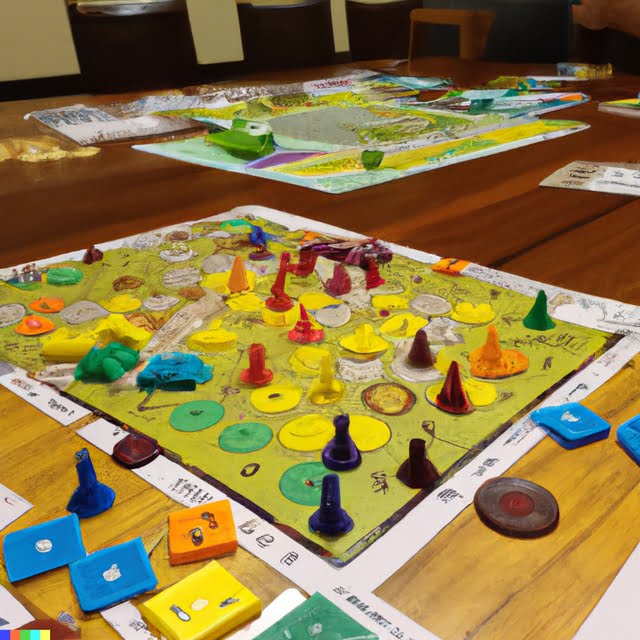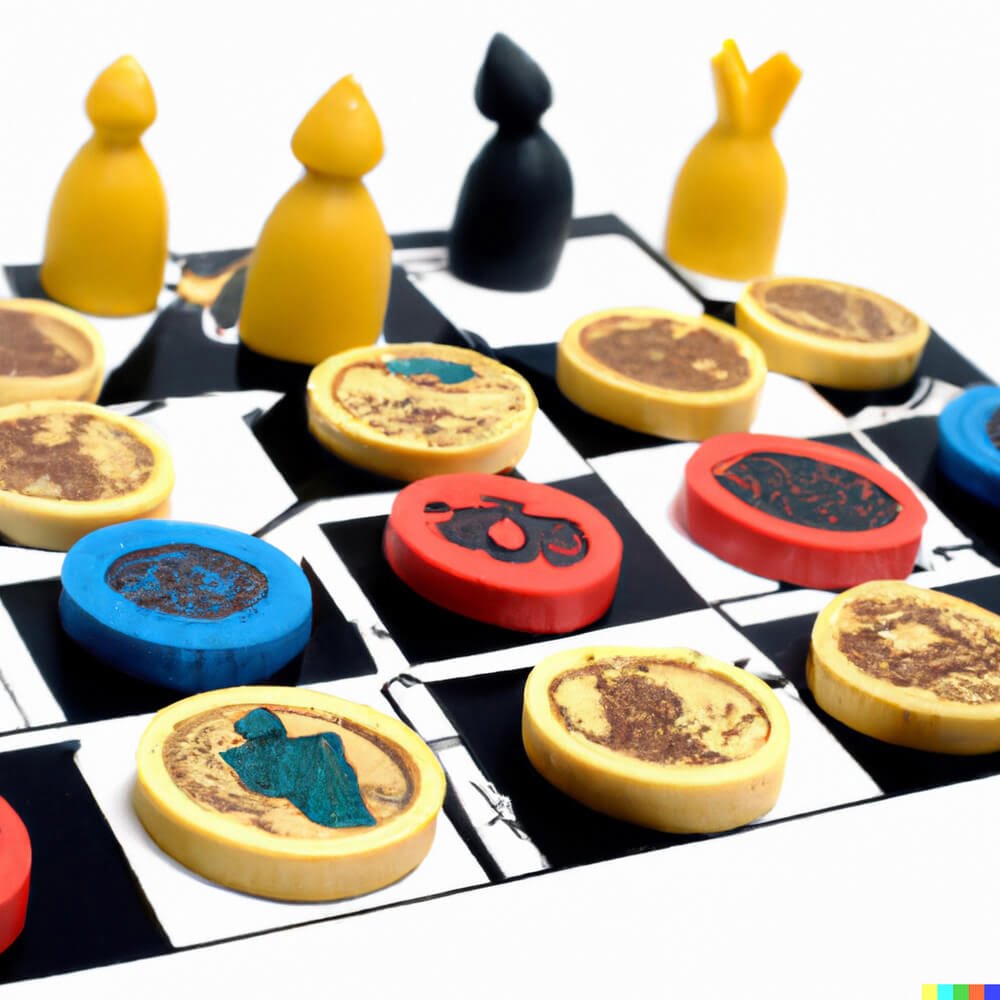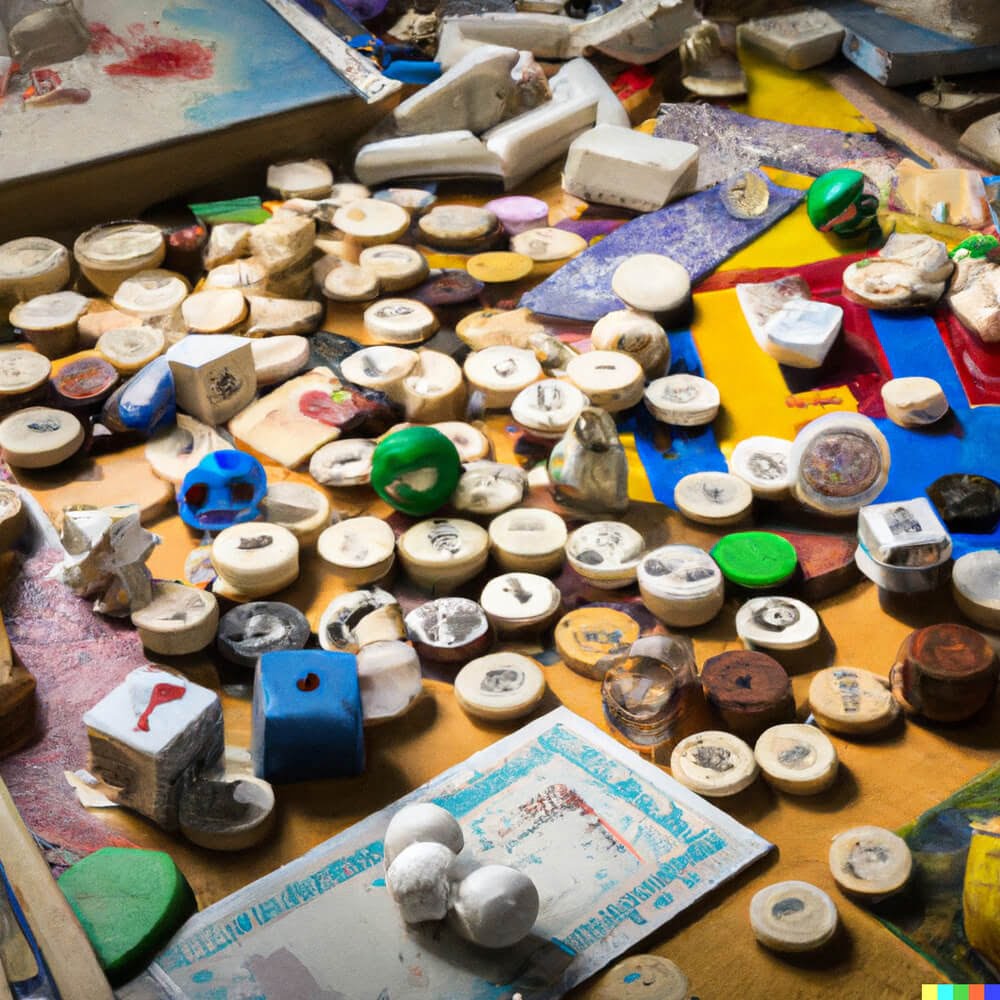Introduction
Jeopardy is an incredibly popular TV game show featuring trivia and challenging questions. Players must buzz in and provide the correct answer to win money in a race against the clock. To recreate the classic game show experience, look no further than making your own Jeopardy game board.
Step 1: Create a Table
Your first step should be creating a 6 by 6 table using either Microsoft Excel or Word, depending on your preference. Make sure that each row and column has enough space so that you can clearly label each of the categories. The free 6 boxes at the top right should be labeled “Daily Double”.
Step 2: Label Categories
For your second step, begin labeling each of the categories. Choose topics that fit your group, like current events or sports facts. The six categories are different levels of difficulty or point values, so put the highest scoring (or most difficult) topics in first position while leaving the lower levels of difficulty towards the bottom rows. Make sure to give all categories equally interesting titles and make all columns roughly equal lengths.
Step 3: Fill In Answers/Questions
For Step 3, fill out each box with a corresponding question and answer for each category level. Place a number value for every box which will indicate what level it belongs to; for example, first column boxes might be worth $200 while the last one might be valued at $1000. Once this more tedious part is complete, you will have transformed basic cells into an exciting representation of a real life Jeopardy Board!
Gather Materials Needed for Making the Game Board
Making a Jeopardy game board starts with gathering the necessary materials. You will need a large poster board or foam core, markers or paint, rulers and straight edges, scissors, and either print outs of clip art pictures to cut out, stickers from sticker books, or images from magazines. Additionally you will need sufficient room to arrange your materials comfortably. Make sure you have plenty of space to spread out the game board without having to move around much.
Draw Out the Game Board
Once you have all the materials gathered together, begin by drawing out your game board on the poster board or foam core with the markers. Use a ruler to ensure accuracy and that everything is in even columns and rows that create a grid-like pattern on your game board. Color in each section beyond just outlining them if desired for more artistic effect. Make sure there are enough sections available for adding questions and answers. For example, if making a basic five by five game board–five across by five down–you will be able to make 25 questions with corresponding answers since each square represents one question/answer set.
Set Up the Categories and Amounts of Points
When making a Jeopardy game board, it is important to establish the amount of categories and points associated with each. Generally, it is best to have five categories with five different point values going from the lowest to the highest (i.e. 100 points, 200 points, 300 points, 400 points and 500 points). This can be done by creating cards with category and point value labels or simply writing them down on a piece of paper for easy reference. Additionally, players should also determine what topics and questions should go under each category. It can help to divide up the work among multiple people so that everyone contributes to the project and so that no one person is responsible for all of it. For example, one person might be in charge of finding topics for the Social Studies section while another finds Science related questions and answers.
Researching and Writing the Questions
In order to make a successful Jeopardy game board, it is essential to spend time researching and writing questions that relate to the chosen topic. The questions should be written in the form of an answer starting with “What is…?” or “Who is…?” This helps the players focus on what they need to pay attention to in order to provide a correct response. In addition, it is important for the researcher to ensure that all of the questions are age-appropriate for the participants who will be playing the game. Depending on the target audience, different levels of difficulty can be incorporated into the board. Finally, avoid using personal opinions or jargon when phrasing questions as these tend to confuse players and take away from the fun environment you are trying to create.
Creating Appropriate Answering Mechanics
Creating a Jeopardy game board is not complicated, but it still requires some careful planning. Each section of the board should represent a certain category with point values along the left side. Once you designate categories and point values, you can write questions related to each section. After completing this step, you will need to create appropriate answering mechanics in order for Jeopardy participants to answer questions correctly. This step offers multiple options depending on what kind of game setup you have. If the game is played on a whiteboard or poster boards, players can indicate that they know the correct answer by taking turns choosing categories and standing when chosen. Alternatively, if playing on paper or electronically, players can use buzzers or clickers connected to the board which instantly show who is going to answer the question. You may also want to add option where two players get the same turn if they both buzz at the same time (called a double up). It’s important to choose an answering system that keeps confusion and chaos out of your game night and creates an even playing field for all participants.
Creating an Engaging Design for the Game Board
An important part of creating a jeopardy game board is designing it to be visually engaging. You will want to create a design that encourages players to pay attention and interact with the board. An easy way to do this is by choosing bright and vivid colors for your board’s background, as well as for categories, points, questions, and other text. You can also use icons to decorate the board which helps add personality and makes it more interesting. Additionally, you should consider adding sound effects or music to bring dynamism to the game. To help ensure that everyone involved in playing can read the text clearly, choose an easy-to-read high contrast font size which can be easily seen from several feet away from the board. Overall, when done correctly, your gameboard design should draw players in and excite them about playing!
Printing and Assembling the Game Board
Creating and printing the Jeopardy game board can be done using a computer program such as Microsoft Word or Power Point. Make sure you include the categories, number of questions, and point values for each question. Once your game board is created, print it out and assemble it. Place the printed game board on a flat surface such as a large table. Secure the game board in place using tape so it does not move or roll up during gameplay. Make sure you have all necessary supplies handy such as pens and answer sheets from earlier in the planning process. Allow enough space around the game board for contestants to easily select their questions without disrupting other players. Finally, ensure everyone is comfortable and can see and hear the host clearly before starting the gameplay.
Include Optional Add-ons For Improved Experiences
Creating an interactive Jeopardy game board experience doesn’t have to be complicated. With some basic materials and basic knowledge of how to construct a Jeopardy board, anyone can create the perfect Jeopardy game night at home.
The building blocks of any good Jeopardy game board include categories and points; these should be easily visible to all playing. Additionally, items like facial recognition software or a buzzer device can add a fun layer of interactivity that will impress your opponents as you progress through the questions and answers. An optional “Daily Double” could also be included for players to increase their jeopardy scoring potential in specific categories if they choose. A strategic addition like this could lead to even more entertaining gameplay as teams would work together to find the best Daily Double option. Finally, multiple rounds and bonus rounds with customized categories give players more opportunity for victory and bragging rights! Whether it’s off-the-cuff Questions & Answers coming from personal knowledge or trivia pulled from hours spent researching, adding bonuses such as timers or musical soundtracks can highly enhance the overall atmosphere created when constructing your very own unique version of a beloved classic!
Testing the Game Board for Accuracy and Functionality
When creating a Jeopardy game board, it is important to make sure the board will be accurate and functional. After the board has been designed with categories and questions, it is necessary to test all of the information for accuracy. A common way to do this is by having at least two other people go through the board and check for any errors or inconsistencies in information. To ensure functionality, you should also test the game with sample players using a buzzer system if available. This gives everyone involved an opportunity to practice how they will interact with the board during an actual game session. It also helps you identify any problems that may occur with its use such as incorrect buzzer timing or misread questions. Once these tests are complete, you can feel confident that your game board is up to par and ready for use.
Conclusion
Games like Jeopardy offer a fun and exciting way to learn and review information. Jeopardy provides an opportunity for learners of all ages to think critically, test their knowledge on a subject, and gain satisfaction from winning the game. It can also be used as an effective means of assessment by teachers. The fast-paced nature of the game adds an element of challenge combined with cooperative collaboration that keeps students engaged, giving them a sense of accomplishment and motivation when they answer questions correctly in front of their peers. Furthermore, such competitive games can foster teamwork in class and encourage discussion on topics among different people, stimulating idea generation and inspiring conceptual understanding. Consequently, making use of educational games like Jeopardy not only facilitates learning but it can also be beneficial for further skill development such as problem-solving ability, research capability, and communication skills.

I love playing all kinds of games – from classics like Monopoly to modern favourites like Ticket to Ride.
I created this blog as a way to share my love of board games with others, and provide information on the latest releases and news in the industry.





